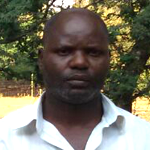Radiofrequency catheter ablation is a procedure that is performed to correct a disturbance in heart rhythm. A brief review of how a normal heart rhythm occurs and a description of some of the rhythm problems that are treated with this procedure will help in the understanding of radiofrequency catheter ablation.
How does the heart normally work? : Heart muscle cells are stimulated by electrical impulses that cause them to contract in a uniform way and with a regular rate. This contraction produces the heartbeat, which causes blood to be pumped out of the heart into arteries and then to all parts of the body. The flow of blood into arteries can be measured by feeling the pulse, which corresponds to the heartbeat.
Sometimes, the electrical impulses "short circuit" the normal pathway and travel across the heart in an abnormal way. Abnormal pathways, or routes, for the impulses can develop, causing irregularities in the heartbeat, or arrhythmias. In other cases, arrhythmias arise when areas other than the sinus node become active and begin to send out impulses that either compete with or take over the pacemaker function of the sinus node. Typically, the result of these abnormalities is a heartbeat that is too fast. This may develop in any location within the atria, AV node, or ventricles. When the fast rhythm requires tissue from the upper part of the heart, it is known as supraventricular tachycardia. When it requires tissue from the lower chambers only, it is known as ventricular tachycardia.
What is RadioFrequency Catheter Ablation?
Radiofrequency ablation is a procedure that can cure many types of abnormal heart beats. Using a special wires or catheters that are threaded into the heart, radiofrequency energy (low-voltage, high-frequency electricity) is targeted toward the area(s) causing the abnormal heart rhythm, permanently damaging small areas of tissue with heat. In some cases, cryoablation, which damages tissue by freezing rather than heating, may be used rather than radiofrequency energy.
The damaged tissue is no longer capable of generating or conducting electrical impulses. If the procedure is successful, this prevents the arrhythmia from being generated, curing the patient. An important advantage of RF current is that it does not directly stimulate nerves or heart muscle and can therefore often be used without the need for general anesthesia. RFA has become increasingly accepted in the last 15 years with promising results. RFA procedures are performed under image guidance (such as X-ray screening, CT scan or ultrasound) by an interventional radiologist or a cardiac electrophysiologist, a subspecialty of cardiologists.
Use of RadioFrequency Catheter Ablation in Cardiology
Radio frequency catheter ablation is a procedure that is performed to correct a disturbance in heart rhythm (cardiac arrhythmia or irregular heartbeat).
It`s most often used to treat supraventricular tachyarrhythmias which are rapid, uncoordinated heartbeats starting in the heart`s upper chambers (atria) or middle region (AV node or the very beginning portion of the heart`s electrical system). In cardiology, RF ablation is used to correct:
- recurrent atrial flutter.
- atrial fibrillation (AF).
- supraventricular tachycardia (SVT).
- some types of ventricular arrhythmia.
Benefits of RadioFrequency Catheter Ablation
- recurrent atrial flutter.
- atrial fibrillation (AF).
- supraventricular tachycardia (SVT).
- some types of ventricular arrhythmia.
Advantages of Pacemaker Implantation
- It takes much less time to recover from RFA than it does from conventional surgery.
- Radiofrequency ablation is less expensive than other treatment options.
- No surgical incision is needed—only a small nick in the skin that does not have to be stitched to close it.
Types of Pacemakers
Single-chamber pacemaker: has only one wire placed in a chamber of the heart.
Dual-chamber (Biventricular) pacemaker: has wires placed in two chambers of the heart, one in the upper chamber, the atria, and one in the lower chamber, the ventricle. A dual-chamber pacemaker controls and coordinates the function of both the atria and ventricle, thus allowing for a more natural pacing of the heart.
Triple chamber pacemakers: have one lead in the right atrium and one to stimulate both the right and left ventricle. These pacemakers are useful for the patients who have weakened heart muscles.
Permanent (internal) Heart Pacemaker: This pacemaker is implanted in a small pocket under your skin and is meant to be left in there for the rest of your life.
Temporary (external) Heart Pacemaker : This is used for initial stabilization of the patient during a cardiac crisis.
Procedure of Pacemaker Implantation
This procedure is done under local anaesthesia and is usually an outpatient procedure. A small incision is made just under the collarbone. The pacemaker is inserted into the heart through a blood vessel which runs under the collarbone. Once the lead is in place it is tested to make sure it is in the right place and it's functional. The lead is then attached to the generator, which is placed just under the skin through the incisions made earlier. Once the procedure has been completed the patient goes through a recovery period of several hours and often is allowed to go home the day of the procedure.
Post Query
Refer a Patient
Request a Call Back




